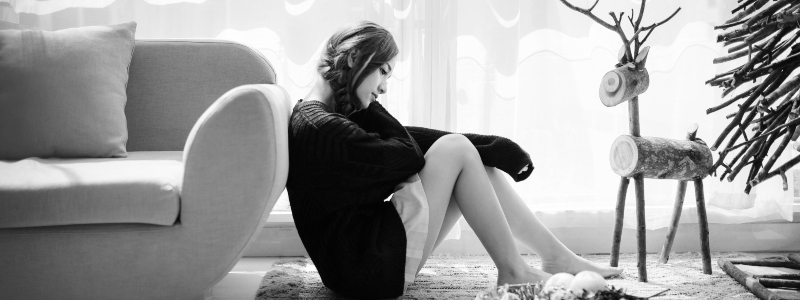Since the dawn of humanity, emotions have been integral to our survival, guiding our ancestors* through a world filled with imminent threats. Fear prompted quick reactions to danger, joy encouraged behaviours that strengthened social bonds, and disgust helped prevent contact with harmful substances.
These primitive emotional responses are hardwired into our brains, offering rapid, instinctual reactions to our environment. While these responses remain invaluable in critical situations, such as encountering a wild animal or reacting to sudden threats like fires, modern challenges often involve complex social and personal dynamics. These can include managing academic demands, coping with interpersonal conflict, navigating work-related stress, dealing with health issues, and striving for personal growth amidst societal pressures.
When triggered by modern challenges, our innate emotional responses can make us feel unequipped and overwhelmed. Viewing these reactions as abnormal only amplifies our distress. It is essential to recognise their natural and instinctive nature. By understanding their manifestation in our brain and body, and recognising their intended functions, we can learn to accept, welcome, and use them.
Far from being flaws, emotions help us cope and take necessary action to address the challenges we face.
Let’s delve deeper into each emotion and explore its practical applications:
FEAR
Fear initiates a series of neurological events, primarily engaging the amygdala, the brain’s fear centre. This activation orchestrates physiological changes, preparing the body for fight-or-flight responses to optimise survival chances. This mechanism is observed across species, underscoring its fundamental role in ensuring survival in threatening situations.
Consider a scenario from prehistoric times, where early humans encountered a predatory animal while hunting. In such moments, fear would surge through their bodies, prompting quick instinctual responses enabling them to confront the danger or flee to safety. This instinctual reaction allows for rapid assessment and adaptive actions to maximise survival chances. Over time, these innate survival mechanisms would have been refined through natural selection, contributing to the evolutionary success of early human populations.
Today, fear, when experienced moderately, can foster adaptive behaviours and resilience in navigating life’s challenges. The urgency and attention to detail prompted by anxiety can lead to increased preparation, alertness, focus, organisation, and productivity. These factors empower individuals to effectively respond to situations and achieve success in reaching their goals.
Implementable strategies: When facing fear, evaluate the reality of the threat and distinguish between immediate threats and potential future concerns. Determine if the fear relates to a current, tangible problem or abstract scenario. Practise calming techniques like mindfulness exercises, grounding techniques, or guided visualisation to manage the fight-or-flight response and navigate stress. These practices can cultivate a sense of security, enabling fear to serve as a tool for cautious, informed decision-making rather than an overwhelming obstacle.
ANGER
Anger indicates perceived violations of personal boundaries or unfair treatment. It serves as a signal for issues requiring attention or resolution and may prompt assertive behaviours aimed at defending one’s rights to gain recognition and respect.
In prehistoric times, a member of an early human tribe might have experienced anger when perceiving a threat to their territory or resources. This anger could have prompted assertive actions aimed at establishing dominance and preserving access to vital resources, ensuring the group’s survival.
Today, anger remains a potent indicator of issues necessitating attention or resolution, such as workplace injustices or interpersonal conflicts. Constructive expression of anger and addressing underlying issues can lead to advocacy and positive resolutions, although uncontrolled anger may result in destructive behaviours and strained relationships.
Implementable Strategies: Upon experiencing anger, pause to identify its root cause. Practise constructive communication by using ‘I’ statements to express feelings without assigning blame, and actively listen to the other party’s perspective. This approach fosters healthier resolutions and mutual understanding, transforming anger into a catalyst for positive change.
DISGUST
Disgust acts as a protective mechanism against harmful substances and behaviours, signalling individuals to avoid potential threats to physical or social well-being and safeguarding them from harm.
Consider a scenario from prehistoric times where our ancestors encountered spoiled food or contaminated water sources. The feeling of disgust would deter them from consuming these substances, preserving their health and preventing illness or disease.
In modern society, disgust continues to protect our health and influence our social behaviours. It shapes our perceptions of others and guides our interactions by prompting us to distance ourselves from offensive or inappropriate behaviour, thereby maintaining social norms and upholding cultural values.
Implementable Strategies: Recognise the triggers of your disgust and utilise this awareness to assert your personal boundaries and values. Communicate your boundaries to others clearly and respectfully when necessary.
SADNESS
Sadness is characterised by reduced activity in brain regions associated with reward processing, signalling a need for social support and introspection. The amygdala, refrontal cortex, and insula play pivotal roles in processing sadness, and facilitating adaptive responses to emotional distress. Crying often accompanies sadness, serving as a physiological release by triggering tear production to alleviate emotional tension.
Additionally, crying can function as a form of communication, conveying distress and potentially eliciting support from others. Research suggests that crying may have a cathartic effect, aiding individuals in processing and managing their emotions.
Imagine a scenario in a prehistoric community where a beloved member passes away. The tribe is overwhelmed with profound sadness and grief, mourning the loss of a cherished individual. Recognising the signs of sadness, the tribe comes together to offer support, empathy, and solace to those affected, strengthening bonds of kinship and collective responsibility. Through communal rituals and gatherings, they navigate this period of grief, drawing strength from their unity and fostering resilience and cohesion even in adversity.
Today, sadness continues to serve as a signal of the need for social support and introspection, prompting individuals to seek comfort, assistance and guidance during challenging times. By acknowledging and processing feelings of sadness, individuals can engage in self-reflection and adapt their strategies for survival, ultimately leading to more effective decision-making and increased chances of overcoming adversity.
Implementable Strategies: Recognise sadness as a natural, valid response to loss or disappointment. Seek comfort through healthy means, such as connecting with supportive friends or family, engaging in creative outlets like writing or art, or spending time in nature.
Consider exploring alternative solutions or perspectives that may help alleviate your sadness. This could involve challenging negative thought patterns, seeking professional guidance, or trying new activities that bring you joy.
JOY
Joy, intricately connected with the brain’s reward circuitry, orchestrates behaviours geared towards enhancing overall well-being. Dopaminergic pathways within the brain play a central role in the experience of joy, reinforcing behaviours associated with positive outcomes.
In prehistoric times, successful hunts or bountiful harvests elicited feelings of joy and satisfaction among individuals, strengthening social bonds as they shared their bounty with fellow tribe members. This communal joy fostered cooperation and ensured the collective well-being of the group.
Today, joy remains a driving force in goal pursuit, providing a sense of purpose and meaning. When we find joy in our aspirations—whether career-related, personal, or relational—we are motivated to invest time and effort into achieving them. Sharing joyful experiences strengthens social connections, fosters a sense of belonging, reduces conflicts, and promotes group stability.
Implementable Strategies: Take time to explore sources of genuine happiness and fulfilment in your life, recognising that they may evolve over time. Identify your core values, passions, and sources of joy, consciously prioritising them in your choices to enhance well-being. Additionally, create opportunities for shared experiences of joy with loved ones to deepen bonds and cultivate a greater sense of connection and belonging within your family and social circle.
Emotions are fundamental components of the human experience, woven into the DNA of our species. By understanding their biological mechanisms and functional roles, we gain valuable insight into our own physical experiences, behaviours, and decision-making processes. While some emotions may feel uncomfortable, ignoring or suppressing them can lead to negative consequences such as anxiety, depression, or even physical health problems.
Taking an evolutionary perspective on emotions can shift our view, recognising them as valuable tools for growth rather than obstacles to overcome. By actively understanding and accepting our emotions, we empower ourselves to navigate life’s challenges more effectively. Practices like mindfulness and effective communication help us manage emotions constructively, fostering resilience and positive outcomes.
For those grappling with overwhelming emotions, seeking professional help from a therapist can offer valuable support in developing healthy coping mechanisms and achieving emotional well-being.
Lucie Ramet is an experienced Chartered Psychologist and CBT & ACT Therapist offering short and long-term individual support to adolescents (16+) and adults. She works in English and French. She works Mondays and Fridays from our Brighton and Hove practice, She also offers online sessions.
*Ancestors: the people from whom we are descended. When referring to human evolution, “ancestors” specifically refers to hominids, a group of bipedal primates that includes early humans like Homo erectus and Homo habilis.














